Estimated reading time: 17 minutes
The Island of the Gods is filled with the best hotels, attractions, and remarkable cultural experiences. Bali is famously known to be the center for hospitality and tourism in Indonesia. The biggest reason why Bali is so unique is because of the significant role Balinese Hinduism plays in its culture- and its temples!
A little background
Most Balinese take adat (cultural customs and norms) very seriously even to this day. Their meticulous care to preserve of the Hindu religion and local customs is also shown in temples (pura) all over Bali.
You absolutely cannot miss visiting some of the island’s ancient and sacred Hindu temples! With more than 20,000 temples over the landscape, it can be overwhelming to decide which ones to put on your Bali itinerary. Never fear, I’m here to break down the 11 most popular and must-visit temples that should be on every visitor’s list!
P.S. = If you are traveling to Bali, don’t forget to download these apps to make your journey as seamless as possible. Also check out this guide to the best Bali spas!
Table of contents
Words of Caution
Please respect the local culture and customs while visiting these sacred sites. It is very, very important- and I cannot emphasize this enough- to follow the temple rules. There are spiritual consequences to violating these rules, believe it or not.
- Dress modestly. No tank tops or shoulder-baring clothing, no shorts (for men and women)! These temples usually have a reception area in the front, and you can borrow a scarf to cover exposed shoulders or legs.
- Spiritually eligible. Entry is not allowed for women during menstruation. People who just visited cemeteries, or those who just had deaths in the family are also not allowed to enter.
- Watch your words. No cursing or disrespectful dialogues in the sacred temple.
- No taking pictures of spiritual ceremonies with flash. Pay attention to distance as well, give at least 5 meters’ space. Local Balinese people regularly use these sacred temples for worship.
- Do not randomly touch things. It is best to have a guide around to avoid accidentally touching holy objects.
These are ways local Balinese people have established in order to keep the holiness of these temples. As visitors, we all should respect the rules of other peoples’ homes.
11. Pura Taman Ayun
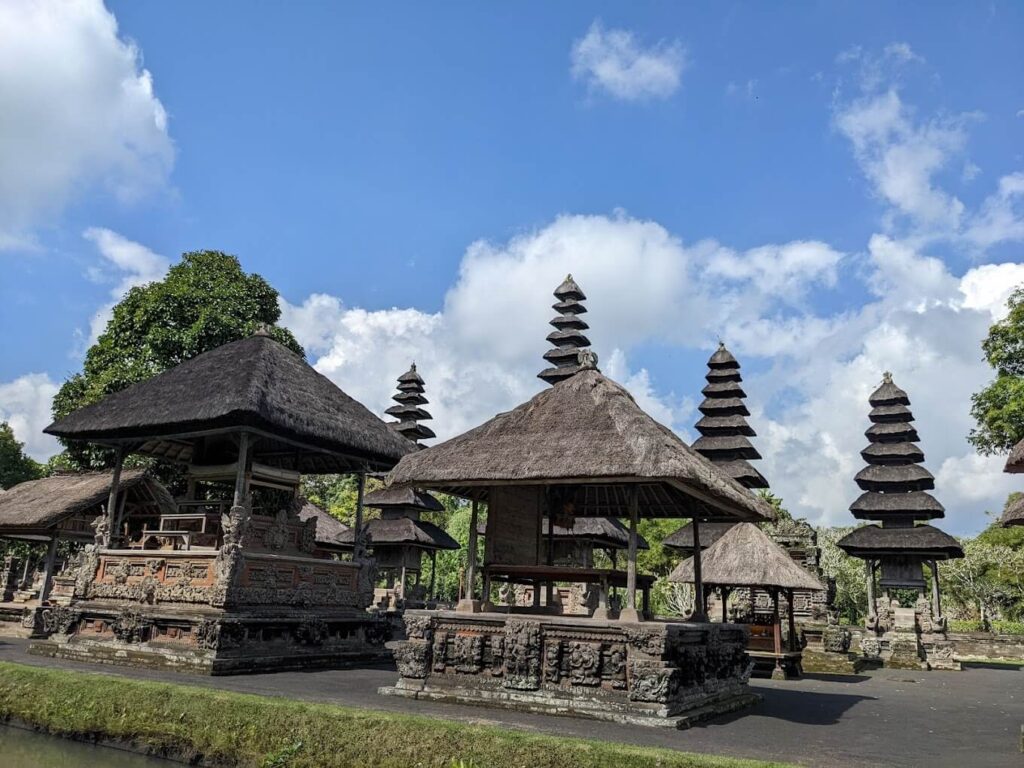
Kicking off the list is the stunning Pura Taman Ayun, a royal temple that dates back to the 17th century. Very green, very peaceful, with the least amount of people. This UNESCO World Heritage site is located in the village of Mengwi in western Bali.
The main highlights are the large outer courtyard with a mesmerizing lotus water garden. Cross over the bridges and moats to reach the inner courtyard that houses the intricately carved main temple and shrines.
Elaborately decorated wooden pillars, gates, and statues showcase the island’s incredible traditional Balinese architecture and craftsmanship. It’s considered one of the most beautiful examples of the typical Balinese temple design with good symmetry and carving art.
Pura Taman Ayun was originally built in 1634 by the royal family of Mengwi to honor their ancestors. It served as their main state temple for worshiping the Hindu deities. Today, it is a peaceful place to wander away from large crowds, as it gets less tourist traffic than some of Bali’s most famous sites. Entry fees are around $2 USD, which includes sarong rental to cover up.
10. Pura Luhur Uluwatu (Uluwatu Temple)

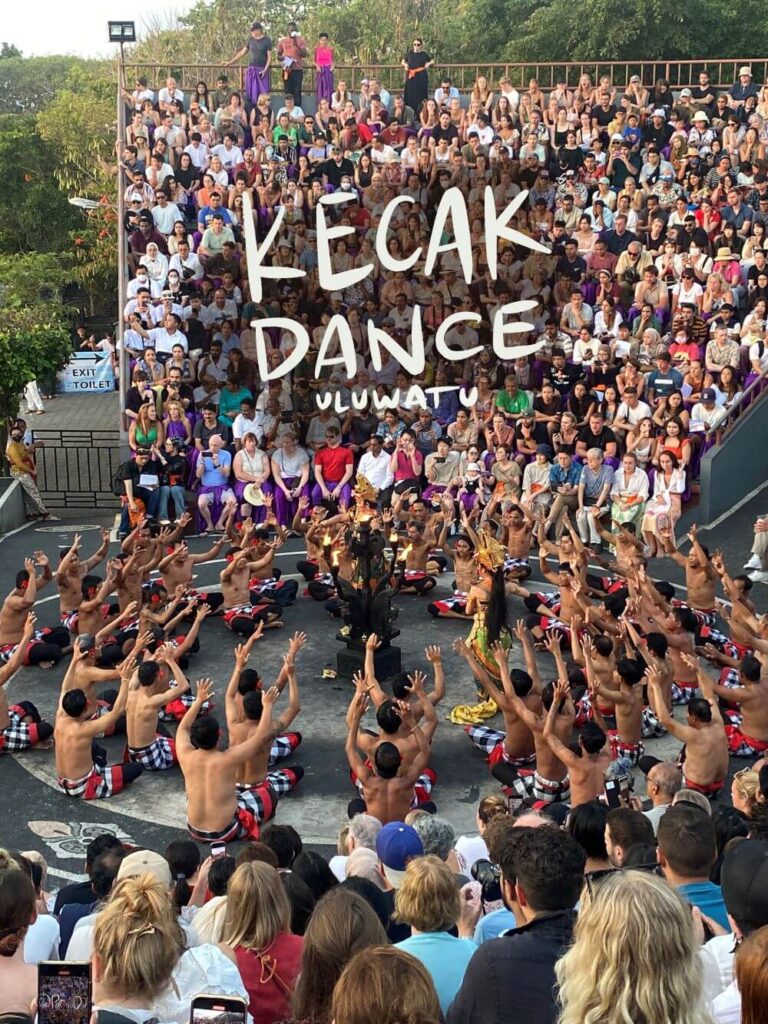
One of Bali’s true archaeological wonders is the ancient Pura Luhur Uluwatu, also known as the Uluwatu Temple. This iconic clifftop sea temple sits perched precariously on top of a 70-meter cliff on the island’s southwestern tip.
Believed to date back to the 11th century, Uluwatu Temple is truly an architectural and cultural wonder. The gray stone temples are built directly into the rocky cliffside, over the crashing waves of the Indian Ocean.
As one of the key spiritual pillars of Balinese Hinduism, Uluwatu is an extremely sacred site. It’s still used for religious ceremonies and traditional dances. Wild monkeys do hang around the area, so hold on to your belongings! These monkeys do understand barter through, so people negotiate with food for the safe return of their stolen items.
For the ultimate experience, try to catch one of the iconic Kecak dance performances in the amphitheater at 6 pm. As the sun sets, the darkening sky and sound of crashing waves provides a dramatic backdrop to this dance.
I recommend you to arrive 1 hour early to enjoy the cliffside temple view before the performance, and grab a good seat 30 minutes prior to the show. The seaside cliffside location and magical vibe at sunset make Pura Luhur Uluwatu one of Bali’s most unforgettable temples. Entrance is around $3 USD, which includes sarong rental to cover up. Kecak Dance ticket is sold separately at around $4 USD.
9. Goa Lawah (Bat Cave Temple)

You’ll find one of Bali’s most unique religious sites at the sacred Goa Lawah, best known as the “Bat Cave Temple.” This Hindu temple complex from the 11th century is located in a beach village on the island’s east side. The temples is built around a large cave opening that is home to thousands of bats!
The dark, bat-filled cave is believed to be a key spiritual place that incorporates both Hindu and Buddhist beliefs. It’s frequently visited by locals doing bathing rituals using the holy spring water that flows into pools within the cave. The historic rituals in this site dates back to the Stone Age!
After checking out the main bat cave (do not go too deep for safety), stroll the expansive temple grounds to see shrines, natural pools, and rocky views. Just be mindful of your head as you may need to duck passing under low rock ceilings and formations.
This is an active temple, so you’ll likely see Hindu ceremonies and offerings taking place throughout. Entrance fees to Goa Lawah are usually around $5 USD, $.50 extra for sarong rental.
8. Pura Kehen
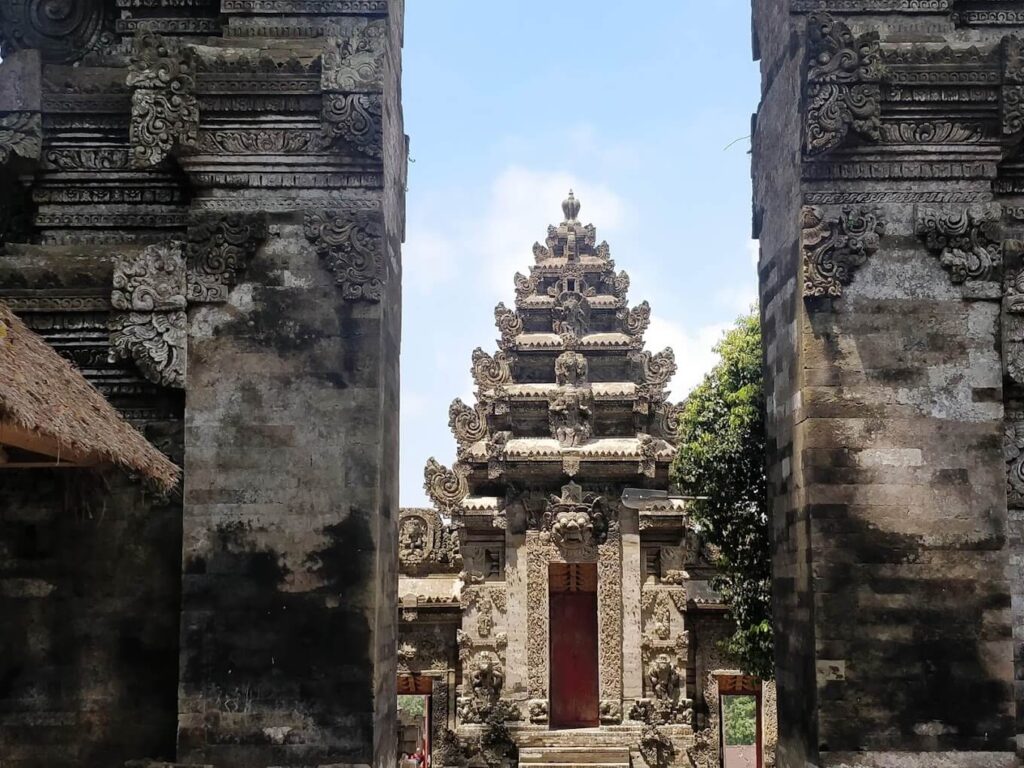
For a quiet, off-the-beaten-path temple away from the crowds, check out the enchanting Pura Kehen in Bangli Regency. This unique 11th century archaeological site is nestled in a secluded jungle valley, hidden away from most touristy crowds.
The main highlight are the thousand-year-old Banyan tree and the series of ancient carved rock bas-relief panels depicting the Ramayana. The carved stone reliefs are remarkably well-preserved and overgrown with lush vegetation, giving it an ancient and wild feel.
To reach Pura Kehen, you’ll need to follow a scenic hiking trail, passing by Hindu shrines, water springs, and meditation areas along the way. It’s a beautiful and peaceful place to explore, surrounded by the sounds of nature.
There’s minimal infrastructure, so don’t expect any big crowds – you’ll likely have this sacred place to yourself. Some small donations are appreciated when visiting. It’s a hidden gem for visitors looking to get away from Bali’s most popular temples. Entrance fees is around $4 USD, which includes sarong rental to cover up.
7. Pura Gunung Kawi Sebatu
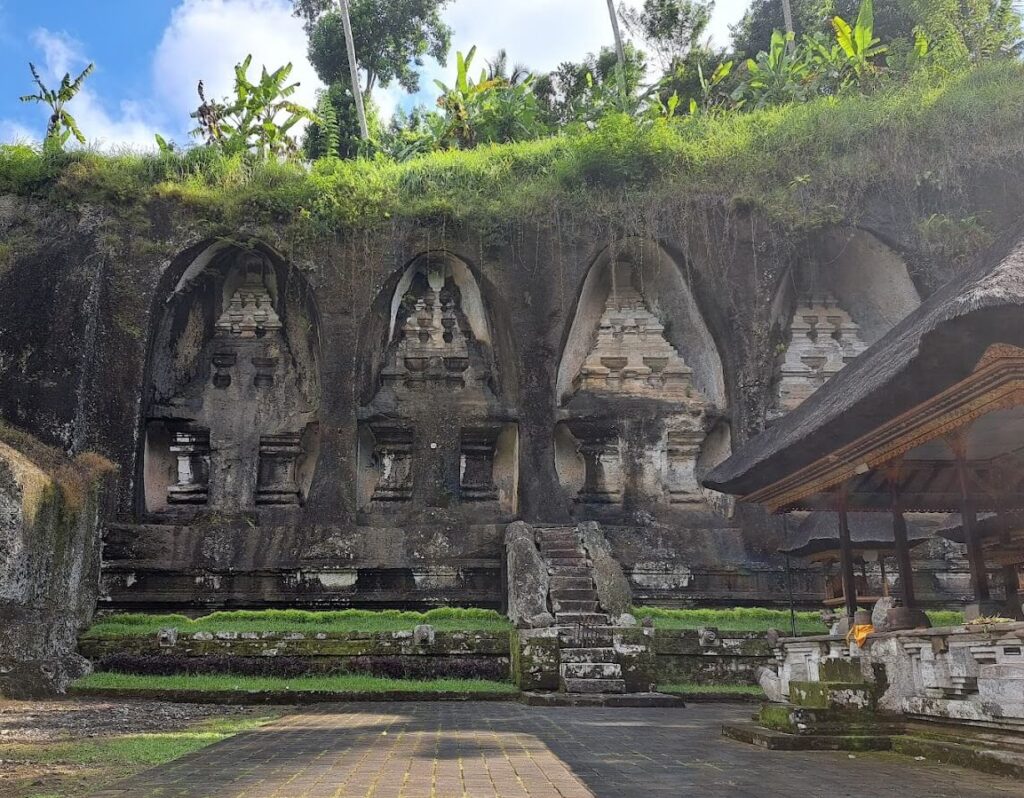
Another of Bali’s unique and lesser-visited temple complexes is Pura Gunung Kawi, located in the village of Tampaksiring. This 11th century archaeological site is often overlooked by visitors, giving you a chance to experience it in relative peace.
What makes Gunung Kawi so special are the 10 rock-cut shrines called candi that are carved directly into a 7-meter high cliff face. Each ornately decorated candi has a carved entrance depicting various Hindu god and symbols.
Gunung Kawi is thought to have served as an ancient monastery or spiritual retreat center, with the candi as places for meditation and solitude. Nowadays, this temple is a popular place to take part of the purification ritual melukat, where visitors can purify themselves with holy water.
In addition to the cliff shrines, there are also ancient bathing pools on the temple grounds filled with fresh spring water, fish ponds, and beautiful terraced rice field valley views surrounding the temple. Entry fees are very affordable at around $2 USD, and I’d recommend you to hire local guides to explain the symbolism and history.
6. Pura Lempuyang Luhur
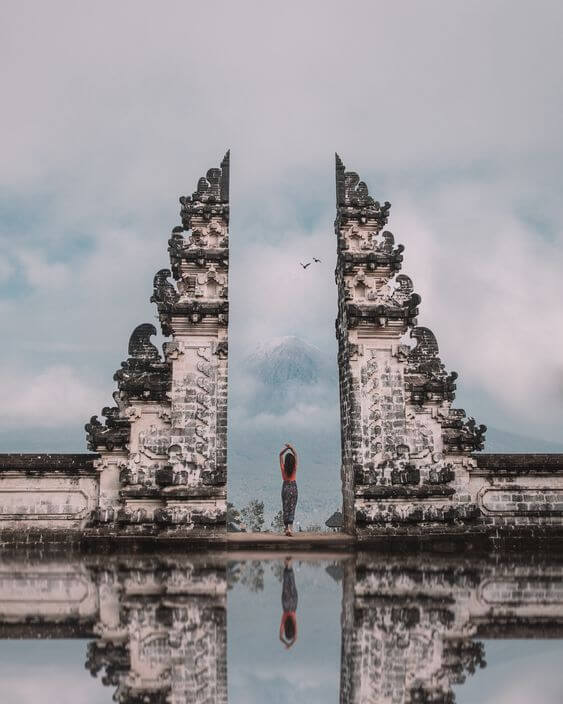
Heading to my number 6 pick – if you’re looking for one of the most unique and Instagrammable temples in Bali, you can’t miss Pura Lempuyang Luhur. This ancient Hindu temple dates back to the 11th century and is perched high up on the slopes of Mount Lempuyang in East Bali.
The main draw is the iconic “Gates of Heaven” – a set of split gateway gates that perfectly frame distant Mount Agung, Bali’s highest volcano. It makes for some seriously jaw-dropping and almost surreal looking photos that look straight out of a Balinese fairytale.
But the Lempuyang temple isn’t just about that famous gate. The entire complex has several other small temples and shrines dotting the scenic grounds filled with lush greeneries, tall palm trees, and sweeping views across the mountainous countryside.
It is a bit of a climb up stairs to reach the top areas with the gates, but well worth the effort for the beautiful overlook and photo ops. Travel tip – arrive early to beat the crowds and have the best chance of getting that perfect shot framed through the gates. You do need to take a queue number in order to take pictures in this iconic spot. Depending on the crowd, people can line up to 1 hour for a photo-op. Entrance fees are generally around $3 USD.
Book a tour to the famous Besakih and Lempuyang temples for the best experience. Locals can guide you on what to do and what not to do at the pura.
5. Pura Tanah Lot

Coming in at number 5 on the list is the iconic sea temple of Pura Tanah Lot. It is definitely a must-visit for everyone, and it is the only place where you can visit the Holy Snake! Legend says that this snake is the guardian of Tanah Lot Temple, and you can line up to see it in the cave by the coastline.
You can also line up to receive blessings by the holy priest. When you get to the front of the line, the holy priest will put on some rice grains on your forehead, say blessings, and slip a Frangipani flower on your ear.
This ancient temple from the 16th century is perched on a rocky outcrop that juts out into the Indian Ocean. Depending on the tides, you can walk right up to the base via a short causeway. Be prepared for the path to disappear when the high tides roll in!
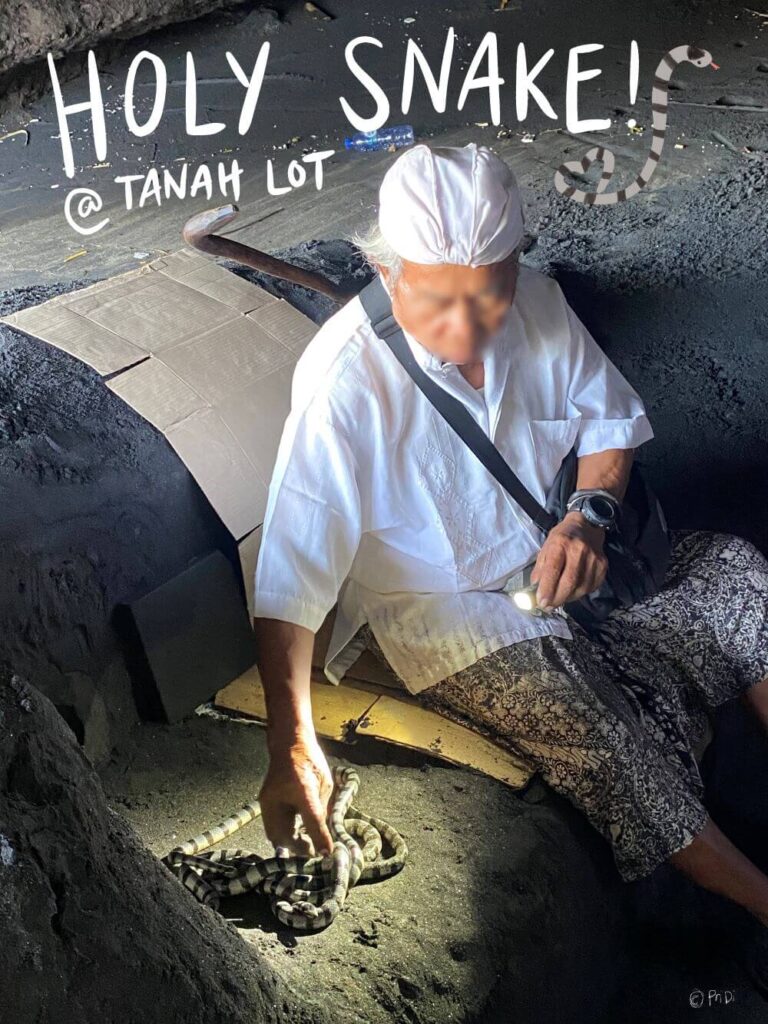
The best time of day to visit is late afternoon, as that’s when Pura Tanah Lot’s beautiful views really shines. As the sun starts to dip towards the horizon, the warm golden light bathes the entire temple complex in a gorgeous orange glow. The swirling waves and clouds add to the already dramatic scene.
Stick around and you may even catch a performance of a traditional Balinese dance and fire show taking place on the shores once the sun goes down. Entry fees are around $5 USD and I recommend you to buy tickets in advance (it fills up fast!). Just be aware that this is one of the most visited temples in Bali, so expect quite large crowds, especially around sunset.
4. Goa Gajah (Elephant Cave)
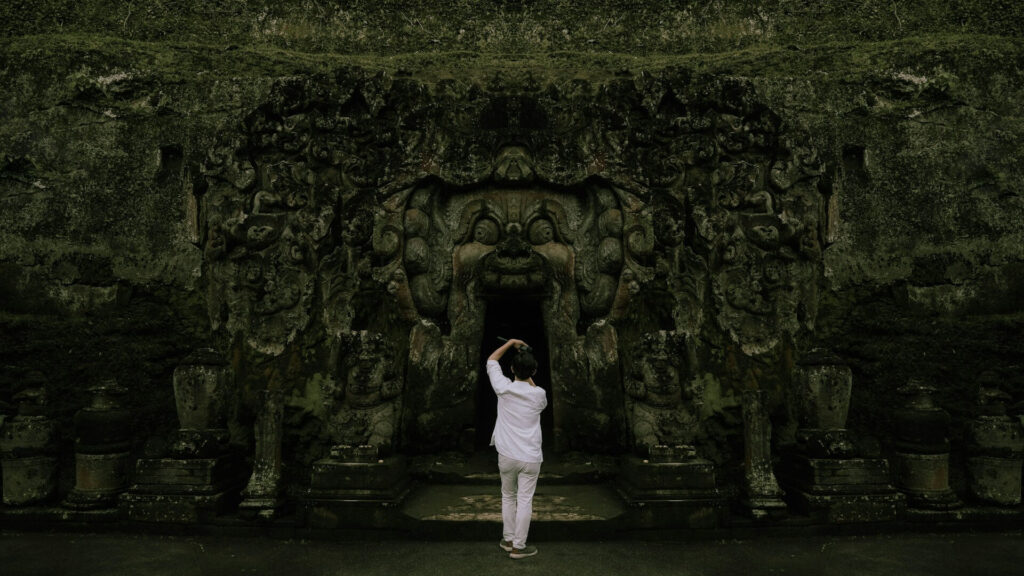
Next up at number 4 is the unique Goa Gajah Temple, also known as the Elephant Cave, in the Gianyar regency. This archaeological complex dates back to the 9th century and is known for its mystical rock-cut cave and relics.
The star attraction is the cave’s entrance, with an intricate carved face known as the “Entry Gate”. Reliefs and sculptures of Ganesh-like figures surrounds this decorated entrance. It’s believed this was intended to ward off evil spirits from entering.
The main sanctum was used as a sanctuary for spiritual meditation. Even though it’s now roped off, you can still view the cave from the entrance. You can see impressive reliefs, petroglyphs, and sculptures carved directly into the interior and exterior rock walls.
In addition to the cave, there are also beautiful Buddhist shrines and stupas, as well as temples like Pura Samuan Tiga that showcase Bali’s unique blend of Hindu and Buddhist roots. Allow 1-2 hours to see everything on the grounds. Entrance fees is around $3 USD, which includes sarong rental to cover up.
3. Pura Ulun Danu Beratan (Ulun Danu Beratan Temple)
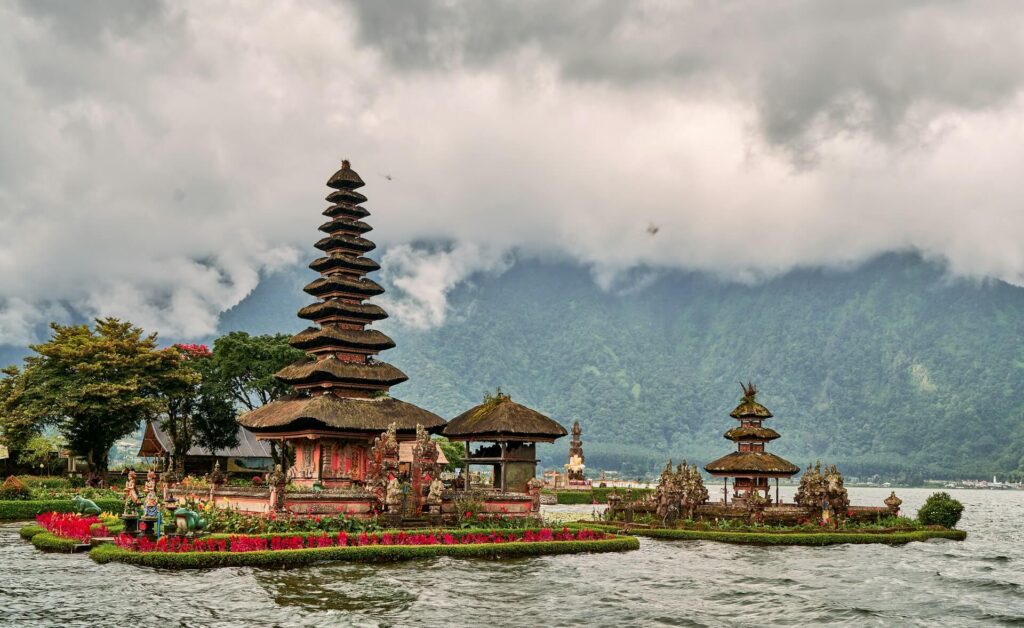
If there’s one iconic Bali temple that is a must on everyone’s Instagram feed. It’s the stunning Pura Ulun Danu Beratan, sometimes shortened to just Pura Bratan. This water temple dates back to the 17th century and lies alongside the tranquil shores of Lake Bratan in the cool Bedugul highlands.
The picturesque Hindu temple complex seems to almost float on the calm lake waters, with its multiple pagodas and shrines reflecting perfectly in a near-mirror image. It’s an incredibly beautiful scene, especially in the early morning hours when the waters are at their stillest.
Head off the main temple grounds a bit and you can find the perfect angle to capture that famous postcard shot of Lake Bratan framed by the stacked pagodas. The vibrantly decorated Balinese temples, lush green gardens, and clear lake waters make it one of the most photogenic places on the island.
This is definitely one of Bali’s most popular temples, so expect crowds, especially during peak seasons and holidays. Having a local guide can be useful to explain the spiritual significance and myths behind the temples dedicated to Dewi Danu, the revered goddess of lakes and rivers.
Entrance fees are around $5 USD, which allows you to explore the various shrines and temple areas lining the lake shores. For the ultimate experience, consider splurging for one of the Ulun Danu sunrise tours offered by local travel companies.
2. Pura Tirta Empul (Tirta Empul Temple)
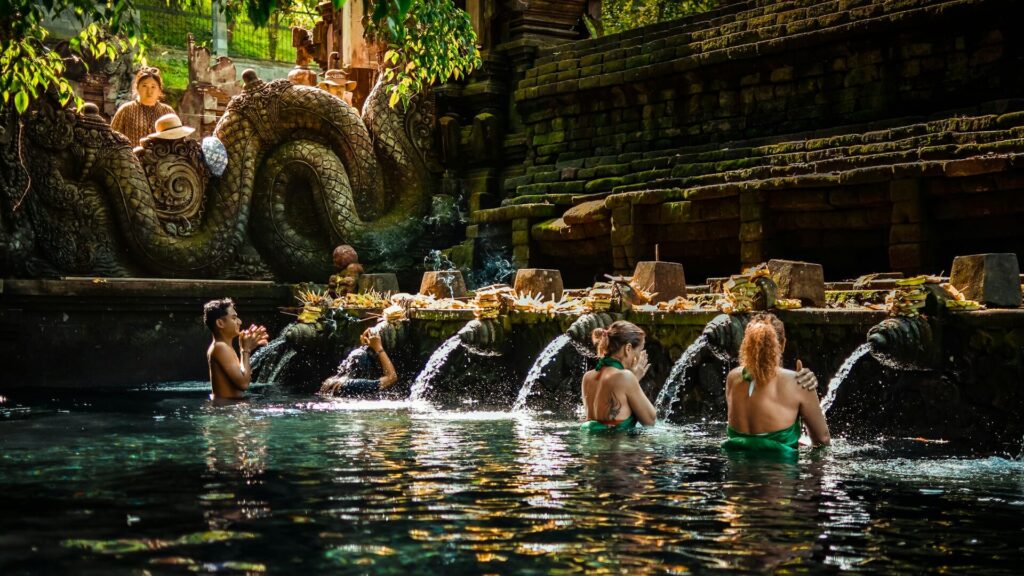
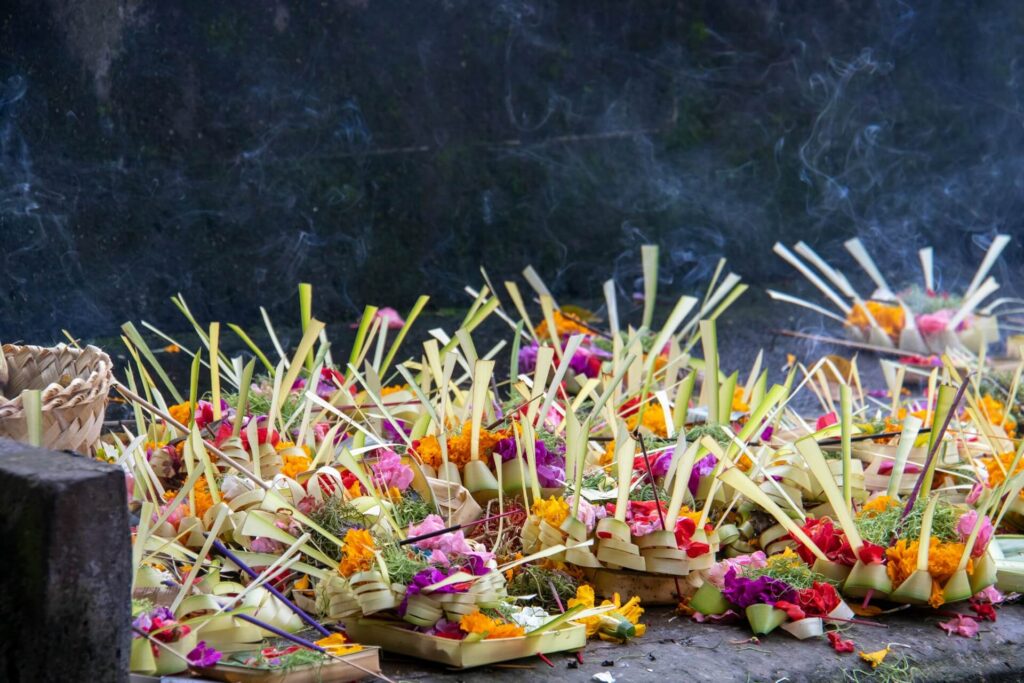
In the number two spot is the sacred Pura Tirta Empul, renowned as a holy water temple built around a natural mountain spring. This 10th century temple complex has traditional Balinese temple architecture housing ornate stone-carved spouts that feed into bathing pools.
It’s believed that the crystal clear spring water flowing into the pools has purifying and healing powers. As such, many religious Hindu ceremonies and rituals are still carried out here by locals coming to bathe under the showering spouts. As a visitor, you’re welcome to participate in the purification ritual yourself by wading into the pools. Make sure that you are spiritually eligible (not undergoing menstrual cycle or just had deaths in the family).
There are two different sets of pools – an inner courtyard for Balinese Hindu worshippers doing prayers, and an outer area where tourists can experience the bathing ritual.
For a guided cleansing and tour of Tirta Empul temple, book your experience in advance!
After bathing, take time to explore the rest of Pura Tirta Empul’s beautiful grounds filled with tropical gardens, courtyards, shrines, and impressive traditional Balinese gateways and architecture. Many consider it one of the island’s most visually striking temple complexes. Entrance fees are typically around $3 USD, which includes sarong rental to cover up. Lockers are available for an extra fee.
1. Pura Besakih (Mother Temple of Besakih)
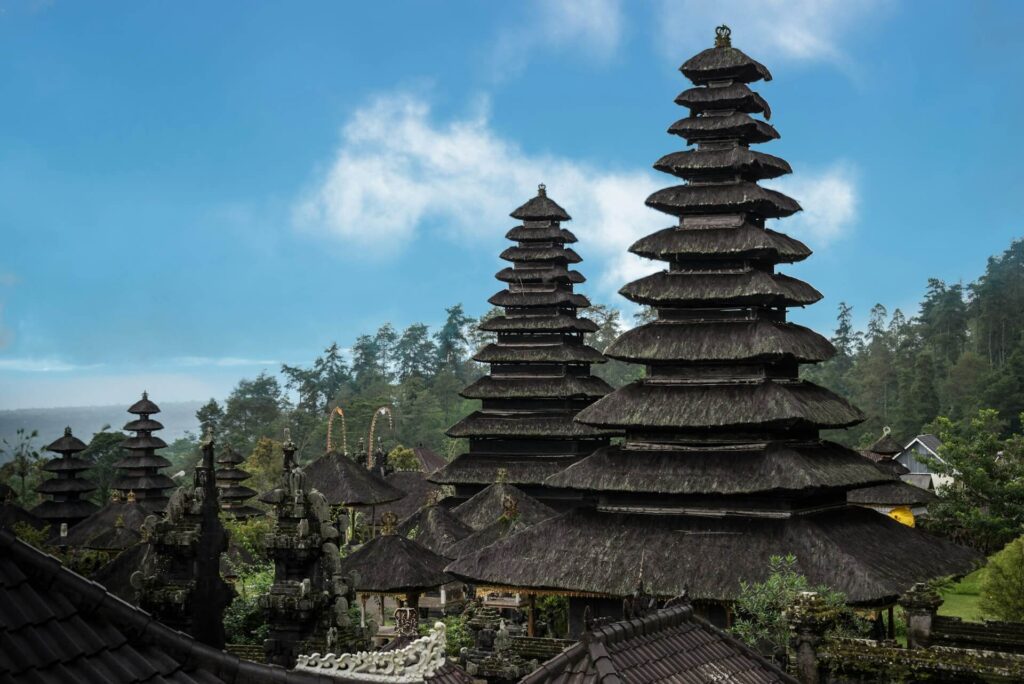
And finally, coming in at the number one most important and impressive temple complex in all of Bali, is the iconic Mother Temple of Besakih, or Pura Besakih. This enormous pura is sprawled across the slopes of Mount Agung, Bali’s highest volcano and most sacred mountain.
With over 86 individual temples, shrines, and ancient structures, Besakih is one of the largest and holiest Hindu temples in the entire world. Dating back to pre-Hindu times, the staggering complex is divided into 18 separate compounds and courtyards. The architecture is richly decorated with multi-tiered shrines, carved gateways, religious umbrellas, and scenic grounds.
The “Pura Penataran Agung” is considered the central main temple and has an impressive multi-tiered meru tower reaching 7 levels high. Other highlights include the elaborately decorated Balinese gateways, holy springs, giant dharma statues, and sculptures depicting various Hindu gods and mythological figures.
This is an active site of daily worship for Balinese Hindu people, so be sure to dress very conservatively in shirts covering shoulders/knees. Some areas may also be off-limits to tourists during special ceremonies. Hiring a licensed local guide can help provide important cultural context while visiting.
Entrance fees are around $6 USD to access the grounds, which includes the service of a local guide and sarong rental to cover up. I highly recommend arriving early before the tour bus crowds descend in order to explore the immense complex in relative peace. However, even with crowds, Besakih’s size and beauty is truly awe-inspiring and a must for any first timer’s visit to Bali.
Book a tour to the famous Besakih and Lempuyang temples for the most accessible experience. If you didn’t know, Bali drivers can also take the most social media-worthy pictures of your group! (from personal experience 🤭)
Final words
There you have it – my picks for the 10 best and most incredible temples that no trip to Bali would be complete without experiencing! From the cliffside sea temples to the majestic mountain sanctuaries, these ancient puras showcase Bali’s vibrant Hindu culture, architectural intricacies, and profound spirituality.
No matter which of these temples you visit, just be sure to dress and act respectfully in accordance with local customs when entering these sacred sites. Hire a knowledgeable local guide, follow rules around photographing or sketching, and avoid climbing on structures or making a lot of noise. Happy temple-hopping!
P.S. = If you are traveling to Bali, don’t forget to download these apps to make your journey as seamless as possible. Also check out this guide to the best Bali spas!

Pin It!


One thought on “Guide to the Most Beautiful Temples in Bali You Should See”